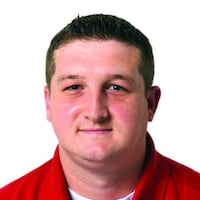By the numbers
$18,000 — Cost to study affect of closing Springfield air traffic control tower
9,634 — Number of flights in 2013 during the hours the Springfield tower was operational
$1.3 million — City and grant money spent on keeping the tower open since 2011
Staying with the story
The Springfield News-Sun has reported on the city’s efforts to maintain the air traffic control tower since the Air National Guard flying mission left in 2011.
The city of Springfield will spend $18,000 to examine the affect of closing its air traffic control tower.
The city could scale back hours or close the Springfield-Beckley Municipal Airport tower, but that could result in the loss of some business at the airport. The airport can be profitable through possible future revenue from the unmanned aerial systems industry, city officials have said.
Since an Air National Guard F-16 training mission departed in 2011, the city has spent $1.3 million to keep the air traffic control tower open in hopes of landing another military mission at the airport.
The city now has hired StanTec, a national aerospace consulting firm, to perform the study. The report is expected to be completed within the next 60 days, said Tom Franzen, assistant city manager and director of economic development.
The consultant will examine how the loss of the tower could affect several operations, including general aviation and unmanned aircraft activity. StanTec will also consult with the Federal Aviation Administration to determine if closing the tower would have any impact on grant funding.
“We know some of those answers, but they’re experts in the industry and I think they can bring some expertise,” Franzen said.
Last August, the city spent $275,000 to operate the air traffic control tower at until October 2014. However, the airport fund subsidy was reduced from $400,000 last year to $175,000 this year, according to the city’s budget.
The city is looking for other ways to cover the costs. Other options it also will consider are seeking state assistance or operating the tower for different hours.
The city also provides fire services, and airfield and grounds maintenance on the 1,800-acre complex. If it ceased air traffic control and fire operations at the airport, it could lose its certification that allows nine- to 30-passenger aircraft to use the airport.
The $1.3 million spent on the tower since 2011 includes about $758,000 in city money and $545,000 in grant money.
The city is beginning its budgeting process for next year and will take into account what the study finds regarding future operations at the air traffic control tower.
“If it were to come back and say the impacts were so devastating that if you close the tower, you would lose X amount of business, then maybe that might change the thought process to say it’s a necessary piece of infrastructure to maintain the vision of what we have for the airport,” Franzen said.
During the hours the tower is operational, the airport saw 9,634 flights last year and 9,526 in 2012, including military, general aviation, passenger airline, corporate jets and unmanned aerial systems flights, according to airport records.
The air traffic control tower’s closure could hamper operations, said John Yegerlehner, vice president of Spectra Jet Inc., which is based at the airport. The business specializes in repairing Lear jets and Challenger aircraft.
The tower is “definitely a plus,” Yegerlehner said, because some pilots prefer to land at an airport with a tower.
But the tower isn’t essential to SelecTech Geospatial, said Frank Beafore of the company that specializes in manufacturing unmanned aircraft.
“We like it and we like the people there,” Beafore said. “From a business standpoint, we could survive without it.”
The tower allows students to get experience with both controlled and uncontrolled air space, said Dennis Epperhart, local administrator at Champion City Aviation, a flight school located at the airport. The students interact with the tower daily and closing the tower would decrease safety, he said.
“It’s good to have the tower there for eyes and ears and to let other traffic know there is a student (flying) in the pattern,” Epperhart said.
Springfield was part of the Ohio/Indiana proposal to be one of six sites nationally to test unmanned aircraft in local airspace, but the region wasn’t chosen by the FAA. The air field will still be used as part of the Ohio/Indiana UAS Center and Test Complex, headquartered in Springfield.
The city has five certificates of authorization with the Federal Aviation Administration to fly drones at the airport, including Sinclair Community College and the Air Force Research Labs.
The city believed an operating tower would be critical in securing a training mission for the 445th Airlift Wing Air Force Reserve, based at Wright-Patterson Air Force Base. The 445th Airlift flies C-17 cargo transport planes, and the unit currently trains for assault landings at out-of-state sites.
Local officials believe the training could be performed in Springfield to reduce costs and increase efficiency. The existing Springfield runways could be used temporarily until a new strip is built at a cost of $10 million to $15 million, but the project is going to take time due to a lack of military funding, according to city leaders.
The airport will see improvements in the coming months, including an approximately $177,000 taxiway paving project paid for mostly by a grant from the Ohio Department of Transportation’s Aviation Division. The city also received $500,000 in the recently approved state capital budget for an unmanned aerial vehicle hangar at the airport, which could begin construction soon, Franzen said.
“We’re hopeful that it begins this summer,” he said.
About the Author
